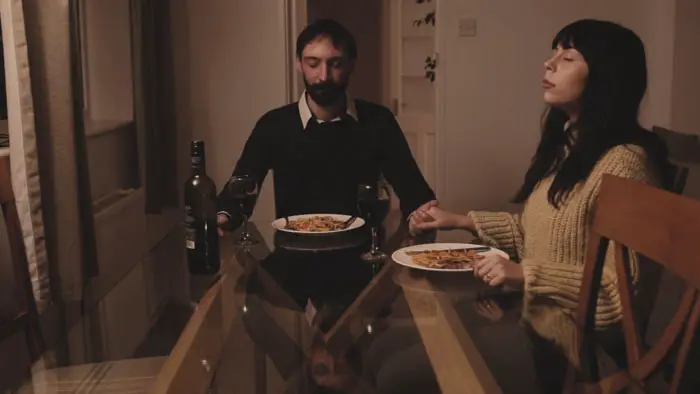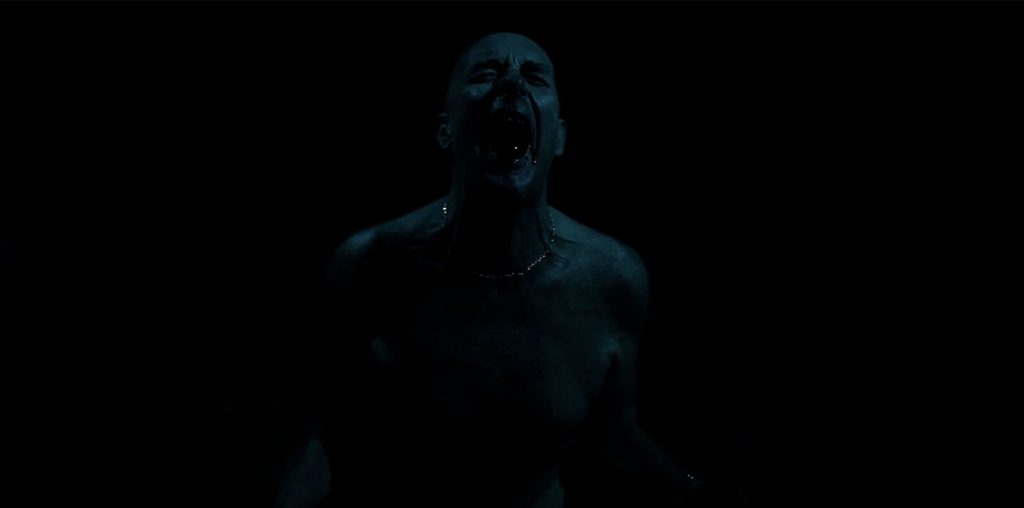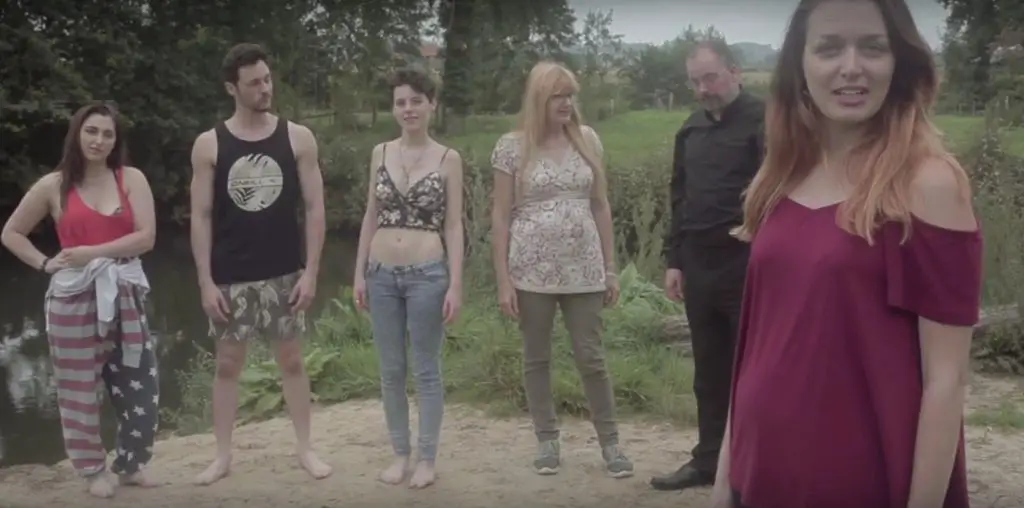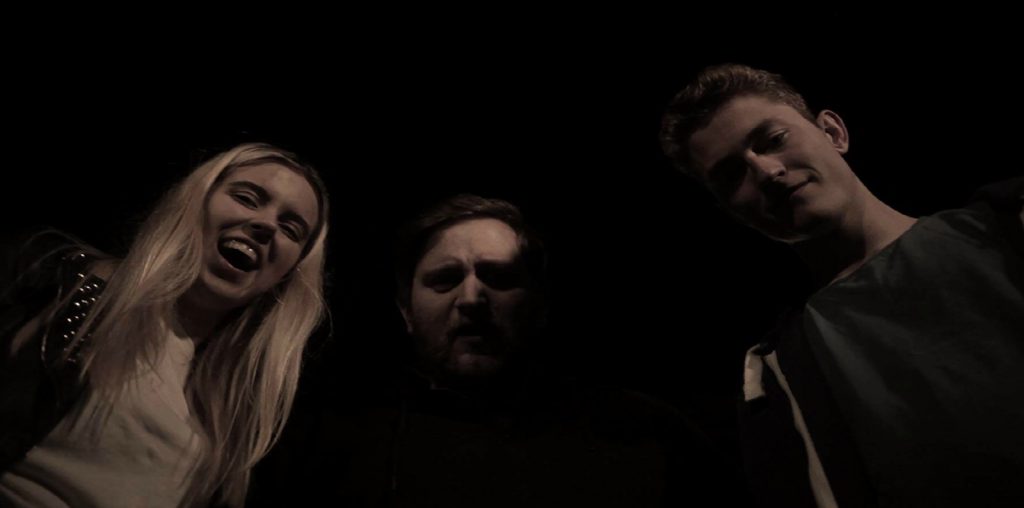
Home Is Where I Lay, directed by Sam Mason-Bell, who co-wrote it with star Annabella Rich, is the story of a young woman’s mental state completely unraveling. Is she experiencing a break in her psyche? Maybe her husband is gaslighting her in the worst way possible? It’s both a good and bad thing that such ambiguity exists.
Lilly (Rich) and Joe (Jackson Batchelor) have just inherited a house. Joe, a pastor (preacher? What’s the difference?), shares with his wife some fond memories of being there as a child. Lilly seems to like it and is pleased that woodlands surround it. But, unfortunately, duty calls for Joe, who must leave Lilly at the abode all by her lonesome.
To help pass the time, she listens to sermons Joe has taped. But as the days wear on and Joe doesn’t answer Lilly’s calls, the preachings become hostile, even calling her out by name. Through these tapes, Joe accuses Lilly of not doing what she’s told and confesses to God that he thinks of killing her. However, when Joe is home, he’s as sweet and lovely as ever, causing his paranoid wife to be even more confused. Does Joe want Lilly dead, or is she imagining his threats?
Home Is Where I Lay has exactly two characters, Joe and Lilly. As such, it’s not a surprise that the feature relies heavily on Rich and Batchelor. Happily, the two deliver intense performances. Batchelor goes from the menacing man in the tapes to the loving husband with ease, keeping viewers off-balance as to what he’s actually doing or, rather, not doing.

“…[Joe] confesses to God that he thinks of killing [his wife].”
But this is Rich’s show top to bottom, as she is the only person on-screen for 90% of the film, if not more. There’s a sequence where the camera is uncomfortably close to Lilly as the violent, spiteful things on the tapes dawn on her. As the actor proved in the mesmerizing Acting, she can convey just about any emotion with a side glance or turn of the head. Therefore due to the sound design, the harsh dialogue, and her subtle conveyance of emotions, these scenes are far more engaging than they might sound.
Mason-Bell ably maintains a rough tension that gnaws away at both Lilly and audience members throughout the first two-thirds of Home Is Where I Lay. While the single-setting location of the house is probably due to Covid restrictions, it perfectly serves as a visual reminder of how isolated Lilly constantly is. The more she tries to reach out to Joe, the more the empty house engulfs her very being. It’s all quite creepy and haunting.
But, as hinted earlier, the plot’s ambiguity as the end looms hinders the project from reaching perfection. See, if Joe is gaslighting Lilly, the tension comes from hoping she can escape and come into her own. Or, if the filmmakers wrote a downbeat picture, then audiences will mourn what would ultimately be her demise. Conversely, if Lilly’s simply experiencing a mental break not spurred on by someone else, then the way her plight is viewed changes dramatically. Leaving it open to interpretation, be it accidentally or purposefully, robs all watching of knowing how to properly react to the character’s arc at the end. This means that the required emotional punch, something Mason-Bell has mastered in other titles, misses to some degree.
While Home Is Where I Lay might not land entirely satisfyingly, the journey more than makes up for it. Annabella Rich once again proves how deep her talents run, while Batchelor is likable and horrifying all at once. These talented actors, paired with the eerie atmosphere and Mason-Bell’s solid direction, are more than enough to entice audiences to stay with it until the end.

"…talented actors, paired with the eerie atmosphere..."


